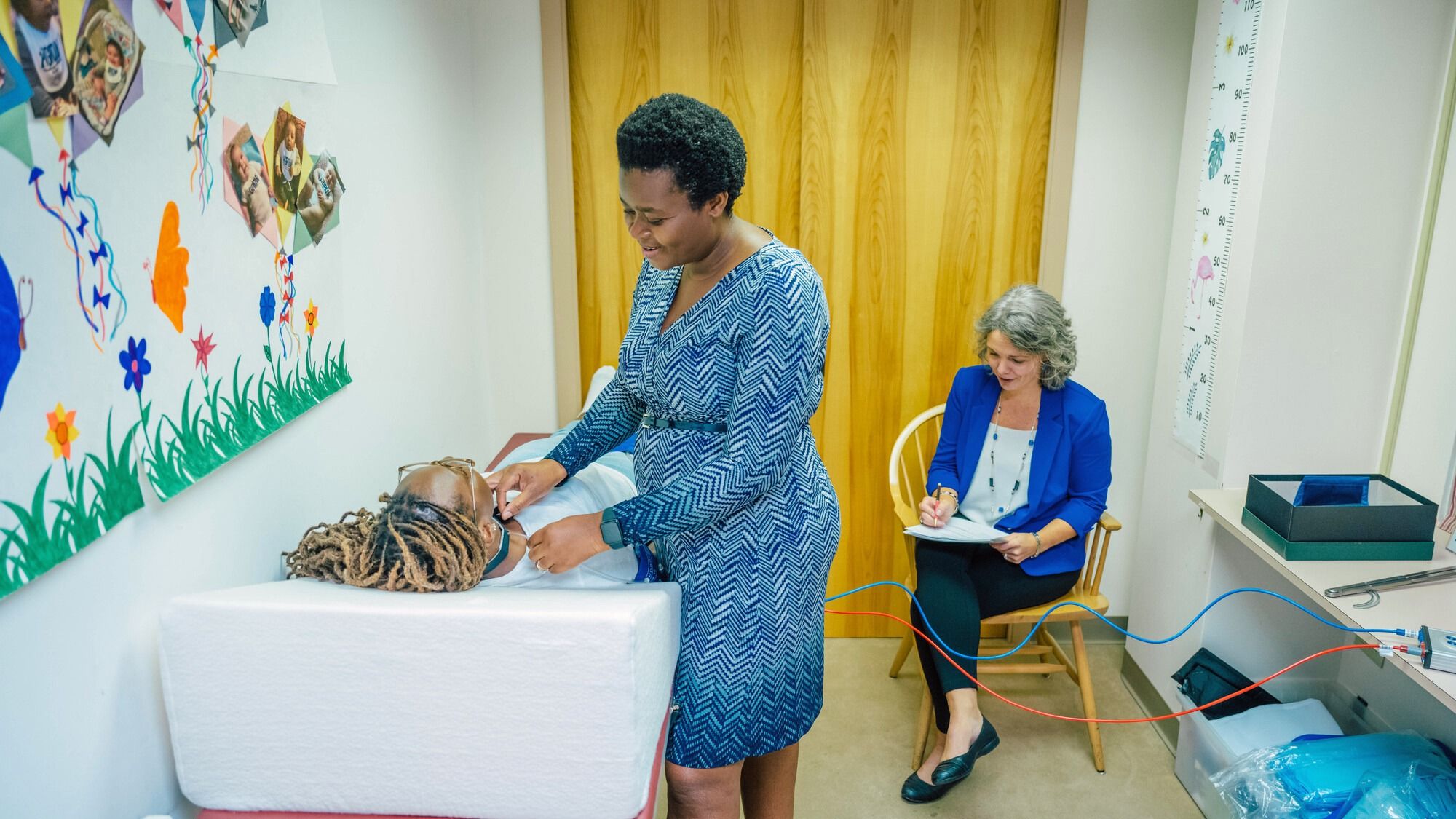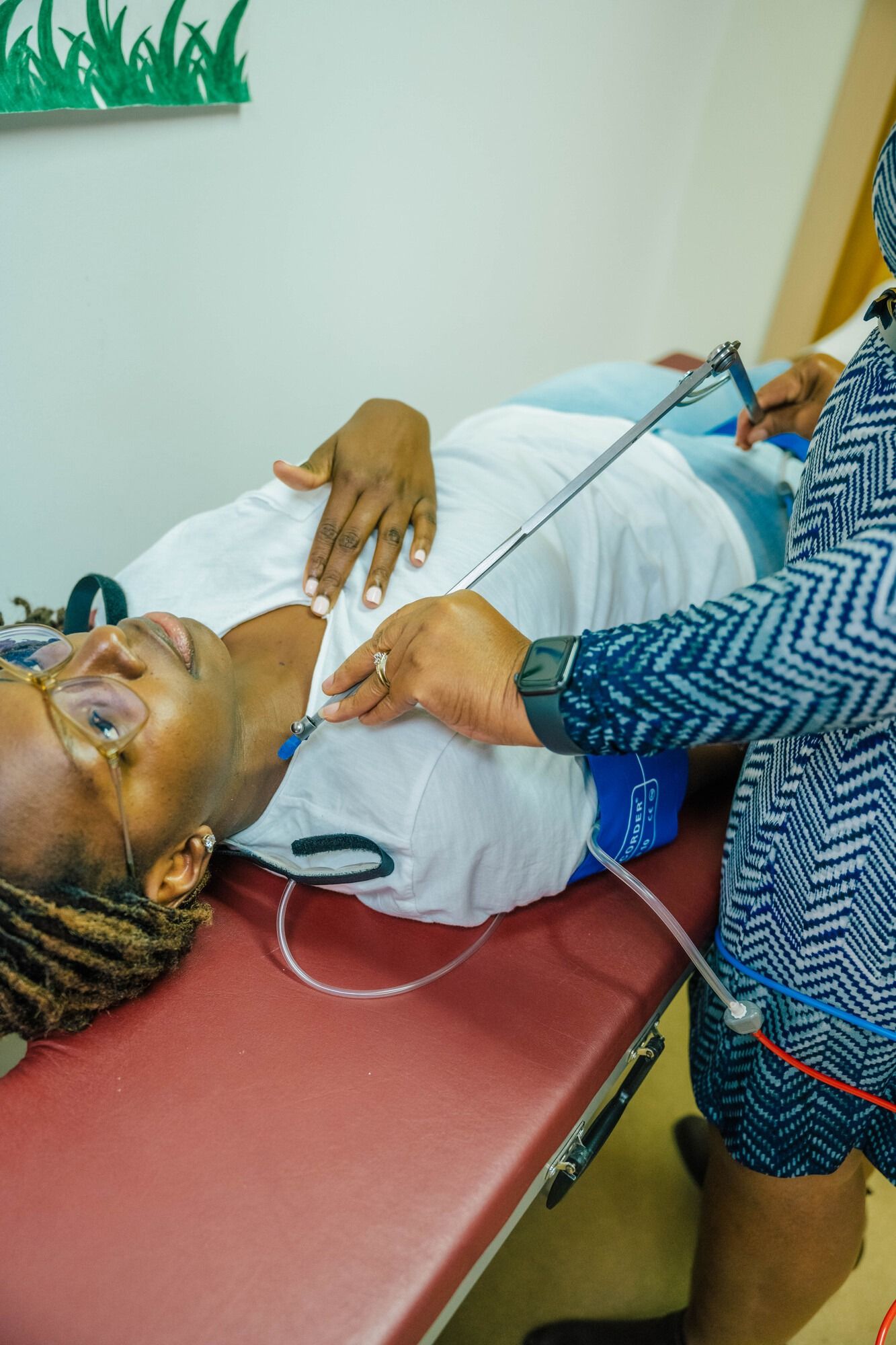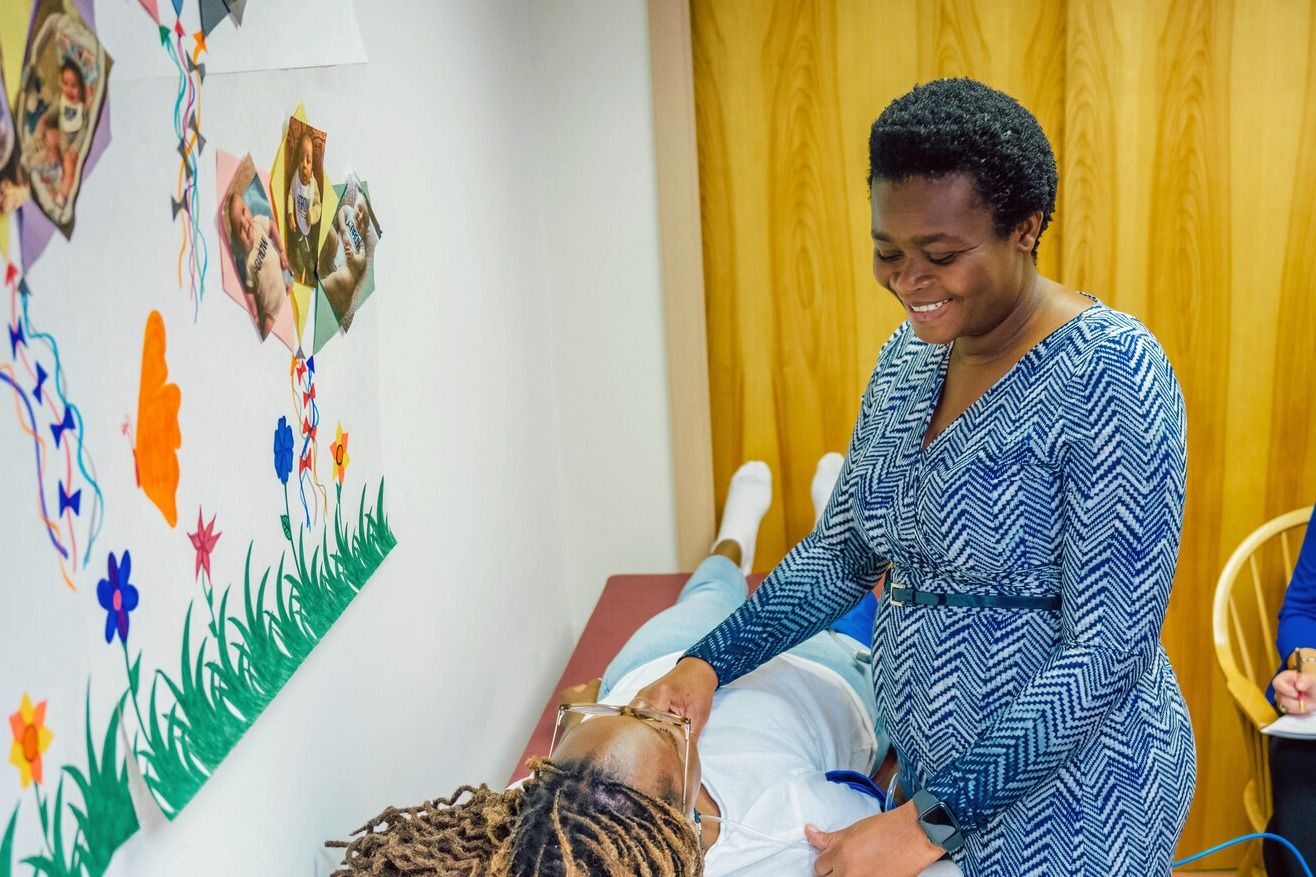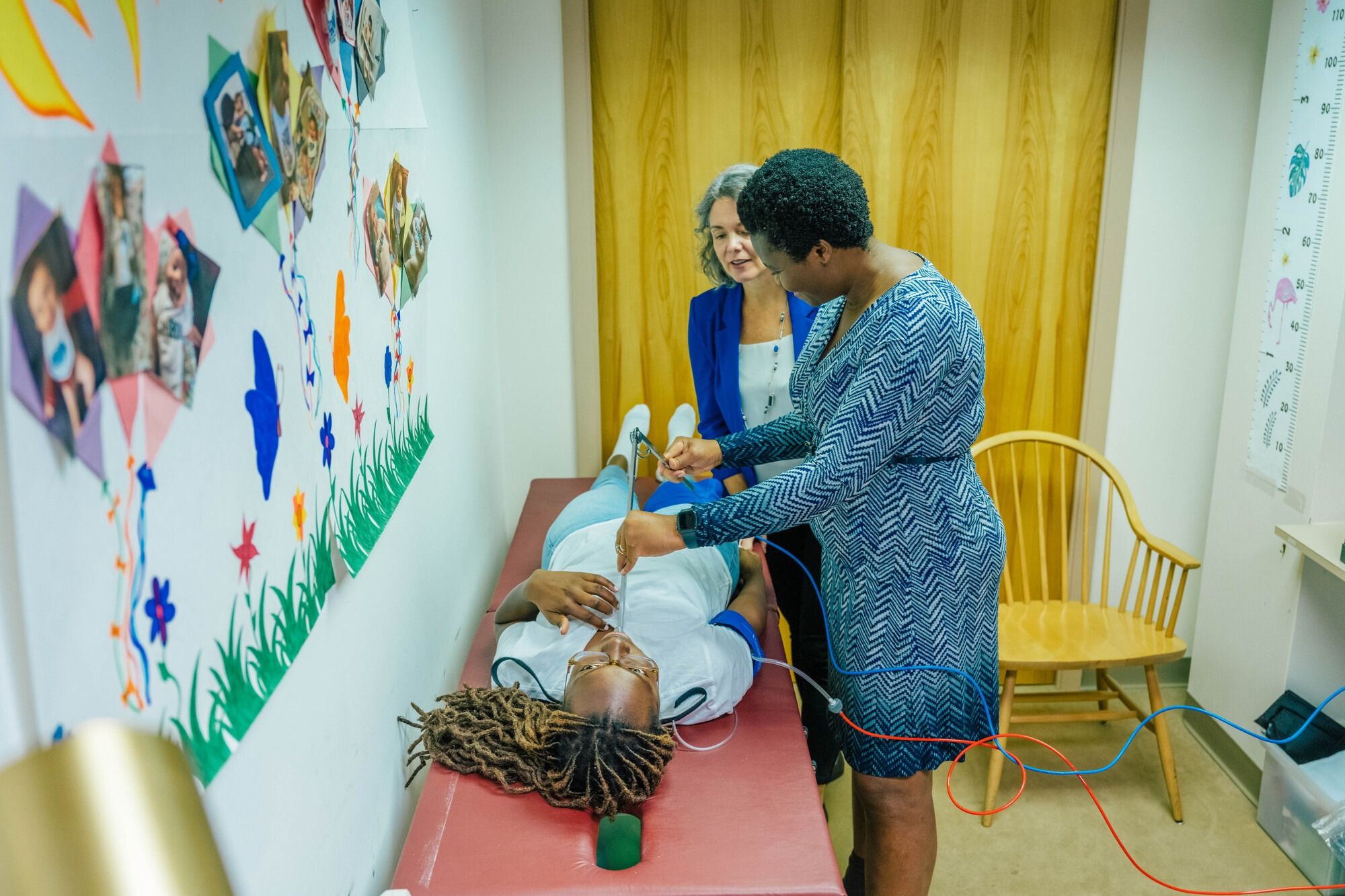Childbearing &
Heart Health

Childbearing & Heart Health
Dr. Forgive Avorgbedor understands that keeping families healthy extends beyond efforts to prevent childhood obesity. And that many parents face additional barriers putting them at high risk of serious health issues.
Last year, the nursing faculty member joined forces with Leerkes and Wideman to use iGrow data to better understand how structural racism influences the health of childbearing parents, particularly during and after childbirth. They’re particularly interested in how pregnancy-related heart and metabolic issues can lead to future heart disease.
“We have a lot of complications and mortality in this population, and we don’t really have solutions right now,” says Avorgbedor.
Arterial stiffness – a strong predictor of heart disease – affects 47.3 percent of African American women, according to the NIH.
When Avorgbedor learned of the iGrow study, it was a perfect opportunity to study a population of parents from a diverse area. According to the 2022 Census, Greensboro was 43.1 percent Black or African American.
“The sample distribution in the iGrow study mirrors this population in Greensboro,” Avorgbedor says. “Greensboro also has a very unique history based on landscape, historical laws including zoning, and restrictive practices.”
“It’s a unique environment for us to measure and understand how the environment impacts Black maternal health.”
A Growing Effort
An ambitious child obesity study following kids from the womb to toddlerhood expands into the preschool years, with a new $3M NIH grant. The robust iGrow data set has also seeded studies into heart health and the pandemic.
Over the next three years, with $500,000 in funding from the Gordon and Betty Moore Foundation, Avorgbedor’s team will examine structural racism using multiple pathways, at both the contextual and individual level. They will use surveys and publicly available data to study residential segregation, socioeconomic deprivation or vulnerability, minority health, food security, neighborhood crime, neighborhood walkability, education level, and household income ratio.
While Avorgnedor says researchers already have some knowledge of how discrimination contributes to adverse outcomes in Black women, this study aims to provide a deeper understanding of the specific risk of cardiovascular disease that Black women face due to their environment.
“Does where you live, where you work, where you receive care put you at a higher risk?”
Original iGrow project data includes information on various biomarkers and hormone levels in childbearing parents during prenatal visits, as well as recordings like BMI and waist circumference.
Avorgbedor’s team will also test parents in the study for risk of cardiovascular disease using an advanced instrument called the Vicorder®. The device tracks pulse wave velocity, a measure of arterial stiffness.
In the past, assessing arterial stiffness typically involved an ultrasound machine, but the Vicorder® fits in the palm of a researcher’s hand.
Avorgbedor, who trained on the instrument during her postdoc, says, “We are trying to see if measuring sub-clinical levels of arterial stiffness could give us any information about risks of cardiometabolic complications.”
Avorgbedor envisions using the study’s results to design an easily implemented intervention.
Rather than waiting for childbearing parents to be diagnosed with hypertensive disorders in pregnancy or postpartum, arterial stiffness might be discovered early enough to prevent heart disease.
“I want to contribute to the solution, and anytime I find an avenue or a medium that can lead to a solution, I pursue it passionately,” she says.


